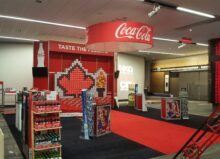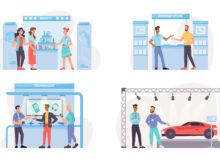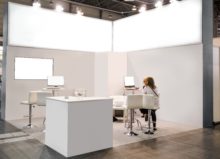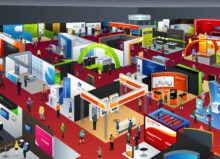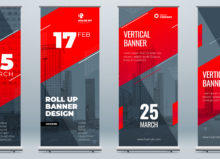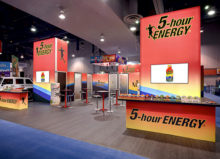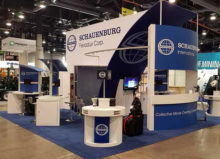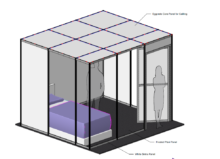Embarking on Your Trade Show Journey: Essential Guide for First-Time Exhibitors
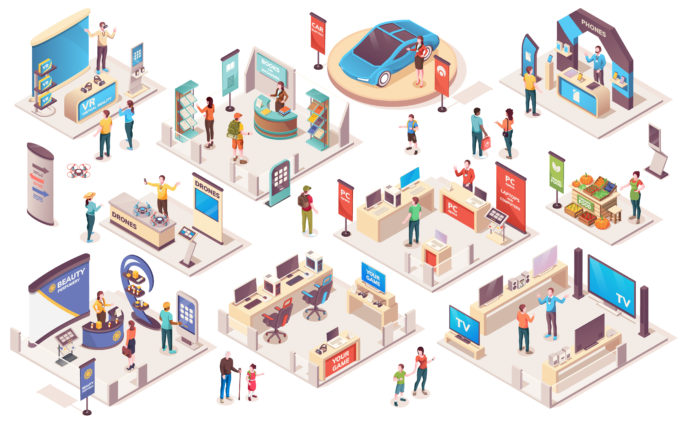
There are various benefits to becoming a trade show exhibitor, including improving lead generation, enhancing brand awareness, and increasing sales. However, if you’re new to the game, it can definitely be scary.
In this article, we’ll teach you the fundamentals of exhibiting, how to become a master trade show exhibitor, and help you avoid common pitfalls that many new exhibitors experience.
Let’s start first with one of the most important phases—planning.
Step 1: Planning
The planning process should begin at least three to six months before the date of the trade show.
A good place to start is to create an action plan and then designate separate roles and responsibilities for each team member. You also must understand all the details about the event, including city-specific regulations and critical deadlines set by the venue.
Other planning tasks should include:
Setting Objectives
It’s important to define goals and set measurable objectives so you can track your overall success. Work with your team to set clear goals and define variables relevant to your business. Objectives could be earning a certain number of social media followers or generating a specific number of sales leads.
Write your goals down. Make them measurable. Otherwise, your success will be hard to assess.
Creating a Budget
As with any other business venture, laying out a precise budget is imperative for success. Some of the costs that you will need to consider include:
- Space Rental
- Exhibit Design
- Liability Insurance
- Travel, Food, & Lodging
- Marketing & Giveaways
- Employee Compensation
- Booth Registration Fees
- Drayage & Material Handling Fees
It’s smart to expect to spend more than you plan to. Plus, your first exhibit will be more costly than subsequent exhibits, primarily because of your initial investment in equipment and other necessities.
Designing Your Display
Having the right design is key to trade show success. Use your booth to educate your target audience about your company and what you do. This is your chance to make an awesome first impression on your prospects while increasing brand awareness.
Consider incorporating eye-catching, informative banners, graphics, and accessible elements to keep your prospects engaged. The goal is to present them with an experience, not just another boring sales pitch.
You’ll also need to consider whether you want to rent or buy your booth. Renting a booth makes better sense if you’re new to trade shows and aren’t sure if it will work well for your overall marketing campaign. If you decide that it is, and you plan to do multiple trade shows, then it makes sense to go ahead and purchase your booth.
Creating a Booth Schedule
Knowing who will be staffing your booth at the exhibit is important, especially if sales are involved. You should create a schedule of who will work at the booth and when, and include lunch breaks so the booth is never left unattended.
On this note, understand that the people running your booth at any given moment are recognized as the face and personality of your business. Choose your team members wisely.
Assigning a Key Logistics Manager
It’s wise to assign logistical responsibilities to one individual. Some of these responsibilities may include:
- Ensuring that the venue receives shipments of all merchandise and materials.
- Tracking and reporting drayage, shipping, and transportation expenses.
- Communicating with the transportation company.
You’ll also want your logistics manager to oversee setting up and tearing down the booth and ensure the venue receives your booth and other accompanying graphics and equipment.
Marketing Your Presence at the Show
Marketing before a trade show is critical. If you have a mailing list, send out an email blast. You can also use social media, pay-per-click advertising (PPC), or your website to post announcements. Always include the venue location, your booth number, and a link to purchase tickets. And if you’re running a giveaway or promotion, mention this in your marketing, too, as it can help boost attendance.
Step 2: Preparing for the Show

Now that you have addressed team selection, exhibit design, logistics management, and marketing, it’s time to begin preparing for the event. The following steps should be dealt with approximately one month before the trade show, possibly earlier, depending on the show’s location, how far employees have to travel, and other relevant factors.
Meeting With Your Team
Having a capable team that communicates well is invaluable. Talk to your team before the exhibit to establish an overall game plan. Review booth schedules, which products are to be demoed, break schedules, member-specific responsibilities, and the general goals for the event.
Visiting the Venue
If the venue is near your business, visit it in person and learn the layout. If it isn’t proximal to your business, or you cannot make an in-person visit, then look at the venue’s website and the exhibition map to learn. Seeing the venue will help you understand what to expect.
Testing Equipment
If you are going to incorporate virtual reality, augmented reality, digital catalogs, and other technology into your exhibit design, you’ll want to test and retest it to identify any potential problems and come up with backup solutions.
Creating a Backup Plan
You always need a backup plan to address unexpected events, like equipment or technology breaking down. It’s smart to have some paper literature available for your audience if your equipment malfunctions and you cannot execute the exhibit as intended.
Step 3: Exhibiting
Even after pre-planning and preparing for your trade show exhibit, there’s still work that needs to be done during the day of the event. These steps should be executed at least one to two hours before the trade show opens to attendees.
Setting Up Booth
As mentioned earlier, your team needs to practice setting up and tearing down the booth well before this point. You want every team member to know their responsibilities so that your booth is as attention-grabbing, attractive, educative, and entertaining as you intend it to be.
Ensuring Booth Staff Is Prepared
Have a final meeting with your team to ensure everyone’s on the same page, goals are known, the schedule is understood, and everybody is happy and motivated for the event.
Ensuring You Have Enough Giveaway Items & Literature
There’s no doubt that people love giveaways. To avoid disappointing attendees, have plenty of freebies to hand out. If the venue can give you an approximate number of attendees, ensure you have enough paper literature available for that amount plus a little more.
Having Contact Information Available at the Booth
Have an easily visible spot in your booth to display your contact information. Whether you put it on your banner or have it in your literature, you want to ensure attendees can access it because this is effective for new lead generation.
Step 4: After the Exhibit
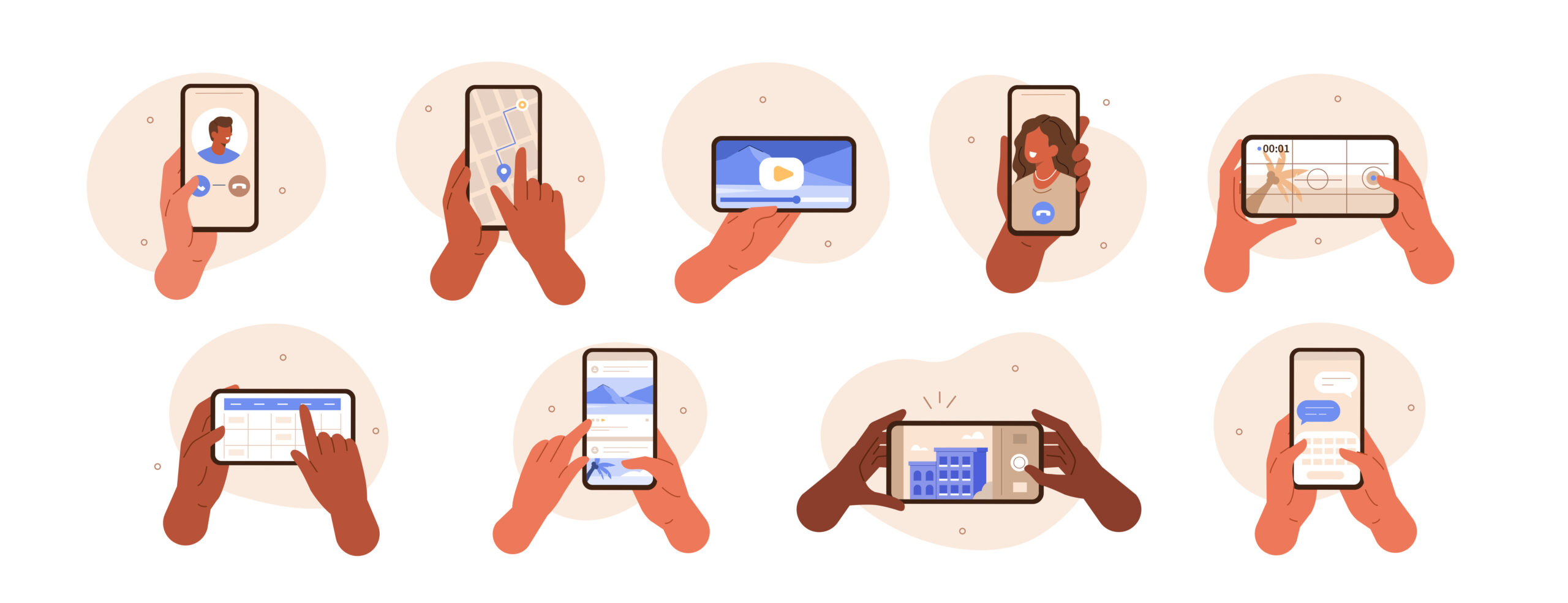
Even after the trade show, your work isn’t over. Some of the tasks you’ll need to do include:
Ensuring Safe & Proper Teardown
Your logistics manager should oversee the teardown process and ensure your booth and other elements are packed away safely and ready for transportation.
During the teardown process, focus on safety first and then continue to optimize the process to improve efficiency for future shows. Small procedural details can make a big difference over time, like ensuring you pack your gear in the reverse order you unpacked it.
Meeting With the Team Again
After the event, sit down with your team to discuss the trade show. Ask for any feedback your team may have received from exhibit attendees, whether or not the booth operated as intended without issues, and their opinions about whether they believe the show was a success.
Contacting Potential Leads
Follow up with leads by sending personalized emails to them a few days after the show. You don’t want to wait too long because they might forget they interacted with your booth. In the email, remind them of the services or products they were interested in, and end it with a non-aggressive call-to-action (CTA), like requesting a free quote or consultation.
Analyzing Statistics From the Show
Here’s the part where you utilize the list of objectives that you developed in Step 1. Look at the data from the show, compare them with your objectives, and see if your company met, failed to meet, or exceeded these goals. And use these statistics to refine your presentation process so subsequent shows operate with more fluency and success.
Are You a First-Time Exhibitor? Contact GraphiColor Today for Trade Show Planning Assistance!
If you have questions about trade show planning or experiencing hiccups during the process, reach out to our experts at GraphiColor.
Founded in 1984, we’re an award-winning graphic design company specializing in custom trade show displays. We can design and build custom displays for purchase and rental and even provide trade show management assistance. Our goal is to help trade show exhibitors like you achieve success with less stress and mistakes.
Schedule a consultation today, and let us know how we can help you.

